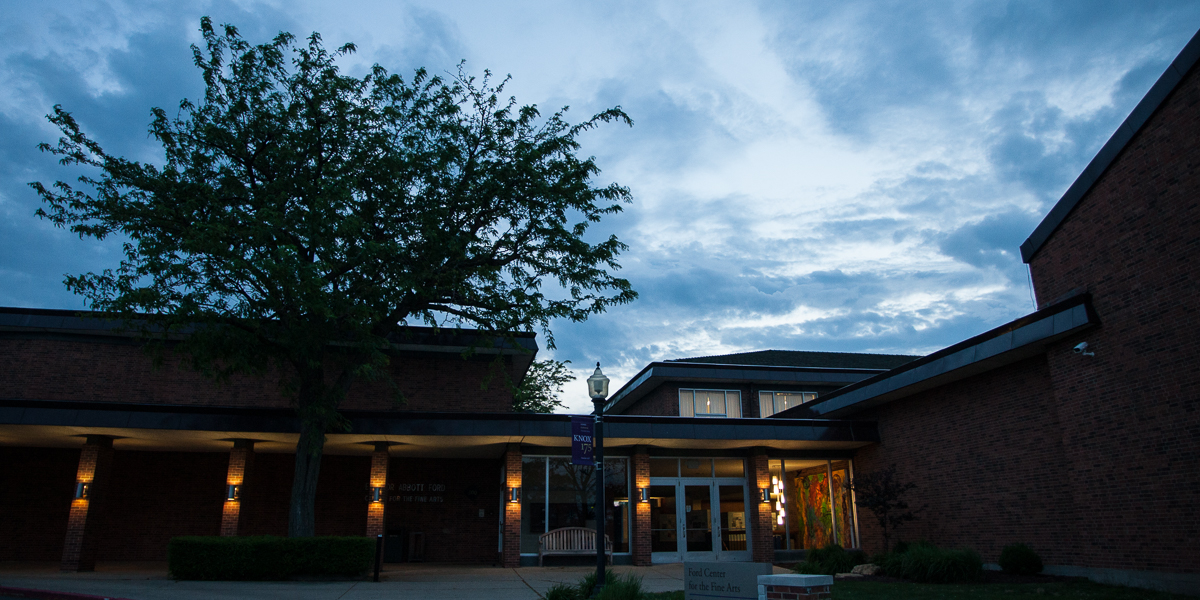


Office of Communications
2 East South Street
Galesburg, IL 61401


Professor Stuart Allison was able to burn a small restored prairie on the Knox campus, but larger burns couldn't be held due to unusually warm spring weather.
This year's unusually warm spring has disrupted a half-century-long tradition of spring prairie burns at Knox College's prairie restoration area in central Knox County.
Spring 2012 has been a "freak occurrence," according to restoration expert Stuart Allison, professor of biology at Knox College. However, Allison says, the warm spring is consistent with climate trends that may force prairie restoration experts at Knox and elsewhere to conduct future spring burns earlier in the year.
Allison says he originally planned to conduct two burns, totaling about 20 acres, at the Green Oaks Field Research Station on Saturday, April 7, after Knox students returned from their spring break. But when he checked conditions the week before, Allison says, "it was quickly apparent that we completely missed the window to burn."
Due to warm weather, Allison says, the prairies looked like they should have been burned two weeks earlier.
Allison and colleague Peter Schwartzman, associate professor and chair of environmental studies, were able to burn two very small prairie sections on the Knox campus on March 14. "I burned two small sections at Green Oaks on March 31 -- one was heavily shaded and the other had a lot of brambles that I had to knock down," Allison says. "But I found that there was too much growth in the larger prairies to burn them. I concluded that a burn would cause more damage than good."
Prior studies at Green Oaks -- dating back to the 1950s -- concluded that early spring, specifically the last week in March or the first two weeks in April, is the best time to burn prairie plantings. But this year, Allison says he found that on March 31, birds were already nesting and new growth was appearing on the prairie. "If we had burned on April 7, we would have been damaging the prairie ecosystem, instead of restoring it."
Controlled burns simulate wildfires that swept the prairies of the Midwest prior to the advent of agriculture and urbanization. The typical process involves burning a downwind firebreak, then setting a spectacular large fire that consumes acres of dried grasses in minutes. Blackened fields heat up more quickly, and native prairie plants are better adapted to fire than non-native species.
Allison acknowledges that prior to modern restoration, prairie fires did not occur on a certain date -- lightning strikes might occur throughout the spring and summer. "But it would be wrong for me as a restoration manager, to go out and set a fire on a date when I know that it would cause harm to our larger goal of restoring the prairie," Allison says.
Prairie restoration began at Green Oaks in 1955, making it the oldest prairie restoration project in Illinois and third-oldest in the world. Allison has supervised burns at Green Oaks since 1997. For years, burns have been held in early April, often on the first weekend after Knox students returned from spring break. Allison didn't hold a burn in 2011 because he was conducting ecological restoration research on a Fulbright fellowship in England; the 2010 burn was held on April 3, the 2009 burn on April 18.
Other prairie restorationists in Illinois faced the same problem this year, according to Angella Moorehouse, a Natural Areas Preservation Specialist with the Illinois Nature Preserves Commission.
"For central Illinois, between I-80 and St. Louis, the historic cut-off date for spring burns has been April 15," Moorehouse says. "To avoid damage to wildflowers and animals, for the past decade, many of us have shut down our burn season after the first week in April. This is the first year I stopped burning in late March."
Moorehouse was one of the panelists in a symposium, "Restoration and Conservation in Illinois," featuring experts on prairie restoration, held at Knox on March 30 as part of the annual conference of the Illinois State Academy of Science. Allison was the keynote speaker at the conference.
Allison examines prairie restoration, climate change and related national and international issues in a new book, Ecological Restoration and Environmental Change, that will be published later this spring.
Allison says his book looks at restoration practices worldwide, and takes on controversial questions, such as "When ecosystems constantly change over time, who defines what is natural? And now that climate change is disrupting ecosystem stability, how should restoration ecologists respond?"
Allison's book is scheduled for release May 23 by Routledge, Taylor & Francis Group, a leading publisher of academic books and journals.
Green Oaks has been the site of numerous faculty and student research projects. This spring, one of Allison's students, Kelsey Martinez, is studying forest wildflowers at Green Oaks, including whether they are blooming earlier than they have in past years.
Below, one of this year's unburned prairies at Green Oaks.
Published on April 19, 2012